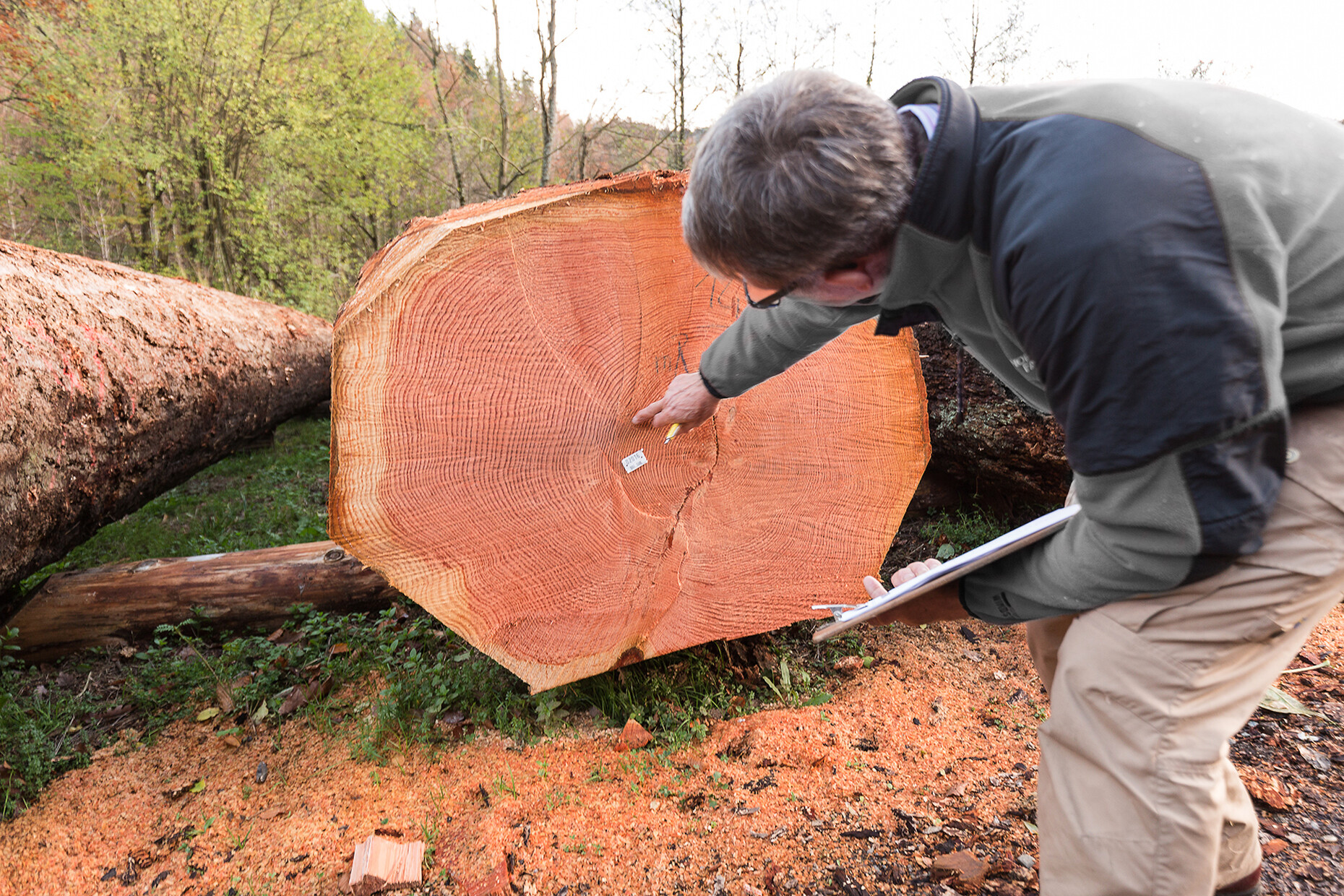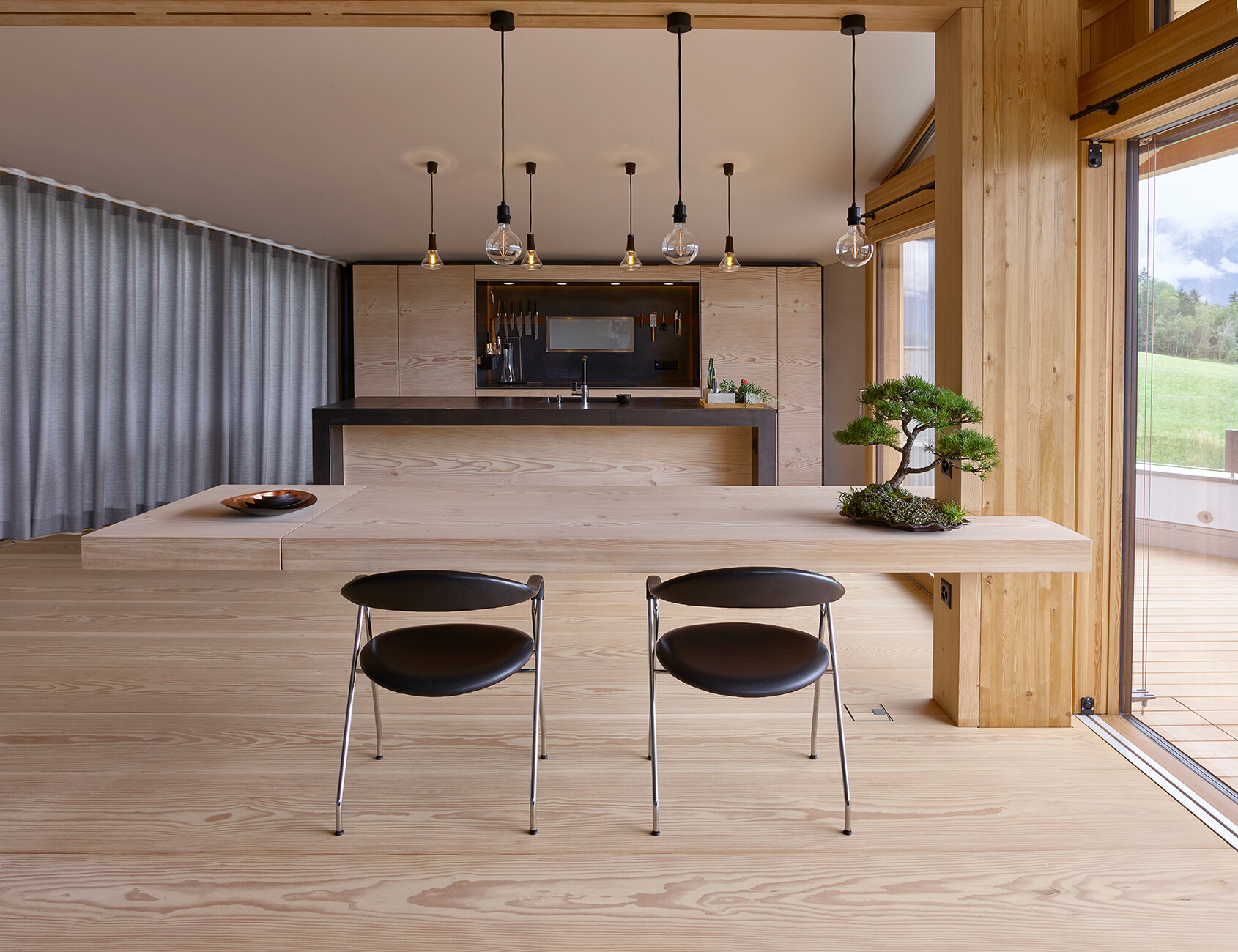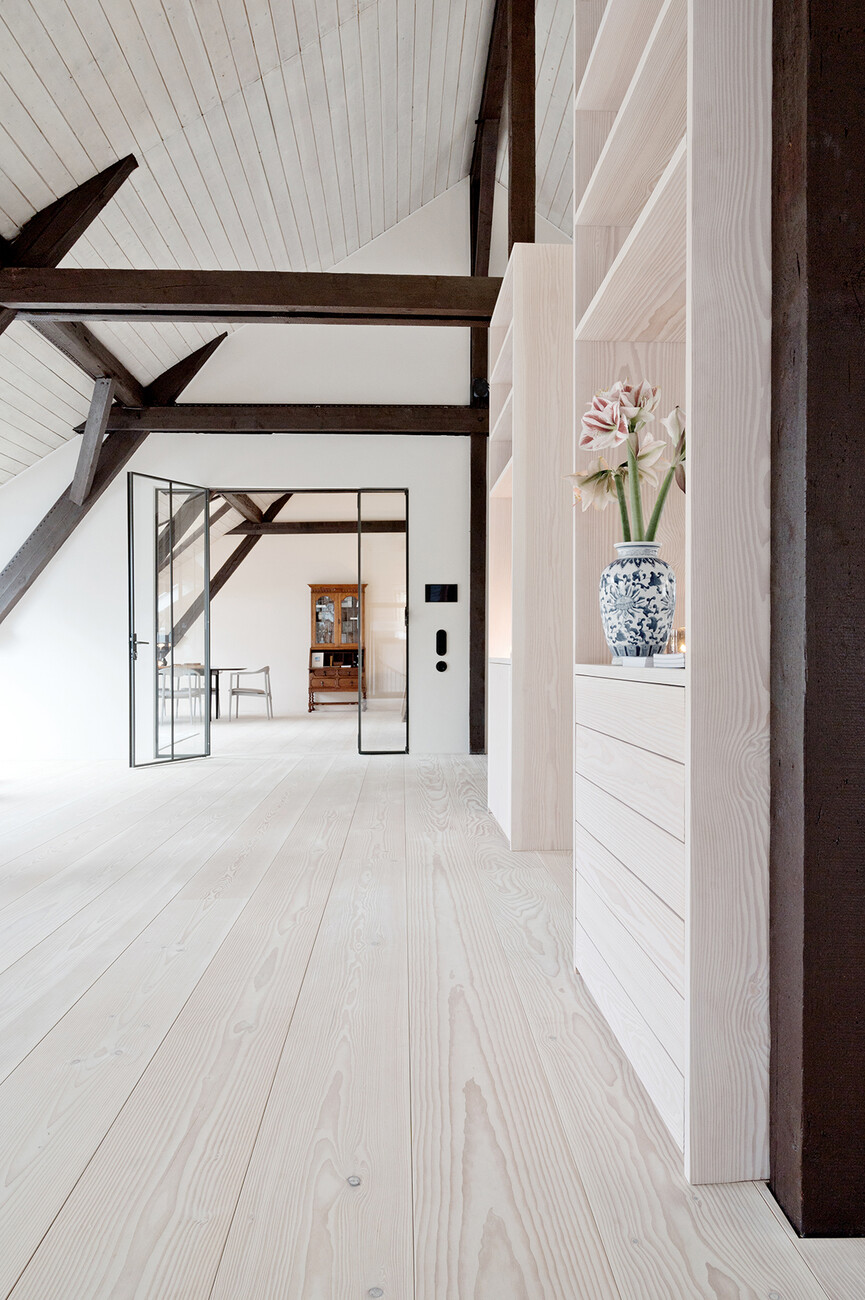An enduring asset
“We conduct up to 2,500 consultations a year and usually one of the first questions is: ‘Where does the wood come from?’” says Steffen Männle. And he doesn’t need to be embarrassed and beat about the bush when answering: It’s no secret whatsoever where the natural raw product pur natur uses to make its high-quality flooring originates. Smaller amounts come from forests in France but the majority of timber the company processes comes from trees grown in Germany, primarily in the south. This is hardly surprising given that the west of the Black Forest is right on the doorstep for the maker of flooring and decking boards; the company is based in Zell am Harmersbach. Douglas firs and oaks top Männle and his team’s procurement list, but they also buy silver firs now and again. “We maintain a permanent basic stock of material so that we can meet a certain delivery time. If a specific color, unusual length or special sorting is required then project-specific purchasing comes into play,” he explains.
As early as 2011, at a time when sustainability was not such a widely discussed topic as it is today, pur natur was already emphasizing transparency and was the first and only supplier to introduce the certificate of origin which makes it possible to determine exactly where the trees come from. Today, the geodata of the origin can still be milled into the floors on request but pur natur no longer needs a label to prove that the timber has been sourced locally and regionally: The open approach to the origin of wood is a matter of course. What has increased, however, is the need to communicate the qualities of the natural product because today people are less well informed about the natural raw materials according to Steffen Männle. Which types of trees are ideal for processing to make floors and which wood has which properties? How does the nature of the wood affect the appearance of the boards? pur natur immediately has clear answers to such questions. However, it does not deliver them “in a patronizing manner,” says Männle, but in a casual conversation with the customer. For example, the timber from the Douglas fir is an excellent choice when large dimensions are needed as the trees can reach a height of up to 65 meters. And as regards time the species is definitely a sprinter: “While it takes just 60 years before a Douglas fir is suitable for our products the oak grows a great deal more slowly – requiring at least 100 to 150 years,” explains Männle. “We always look at which trunk would be ideal for which product,” he says. Customers can choose between two different varieties, “Select” and “Natur”. The “Select” variety is characterized by a fine-grained structure, overall, there are smaller and fewer knots than in the “Natur” line. In addition, individual gradings are also possible depending on the project.
In addition to the origin and classification of wood another aspect is crucial for high quality: The drying process. A temperature of at least 57°C must penetrate right through to the core of the timber because this is the only way of ensuring swiftly that no pests have snuck their way into the floorboards. It also means the wood is ideally prepared for use in modern interiors with underfloor heating where the air tends to be rather dry. pur natur regularly invests in new plant and machinery for the high-quality processing of its boards; as of the end of 2020, for example, the sum committed came to over 1.5 million euros. Specifically, in collaboration with the manufacturers Ledinek and Wenig amongst others the team has developed a production line for solid floorboards up to 15 meters long, veneers, and furniture wood. “You don’t need any chemicals to make wood durable for long use that extends over several generations,” argues Männle. To protect the surface of its products pur natur uses natural soaps and oils. And these days even one of the industry’s biggest headaches, namely parquet adhesive, is at least free of solvents and softeners. “One of pur natur’s underlying principles is to use natural raw materials smartly,” comments Orson Podgorski, Head of Brand & Communication at pur natur.
Only too often little attention is paid to the fact that the value of solid floorboards can also be measured in terms of their positive impact on the ambient climate and the health of occupants says Männle, and the same goes for the budget calculations. After all, solid wood flooring has a natural moisture-regulating effect, provides warmth, is robust and easy to maintain. “You are well advised to invest in a floor that will not give off any pollutants over the years and is good for your health. It’s not the case that you have people, on the one hand, and nature as something separate from us, on the other. We are all part of the bigger picture,” argues Podgorski. And he adds: “The general idea of sustainability has always been to act with rather than against nature. And to do so it’s essential to realize what materials I surround myself with every day and how I can create a natural climate in my living space or my office.” This deep appreciation for a sustainable approach to nature has shaped pur natur from the outset. Ruthard Männle, who founded pur natur back in 1988, insisted back then: “I want to create an awareness for the perfection of nature.” And the family business has succeeded in doing just that - with flying colors.

























